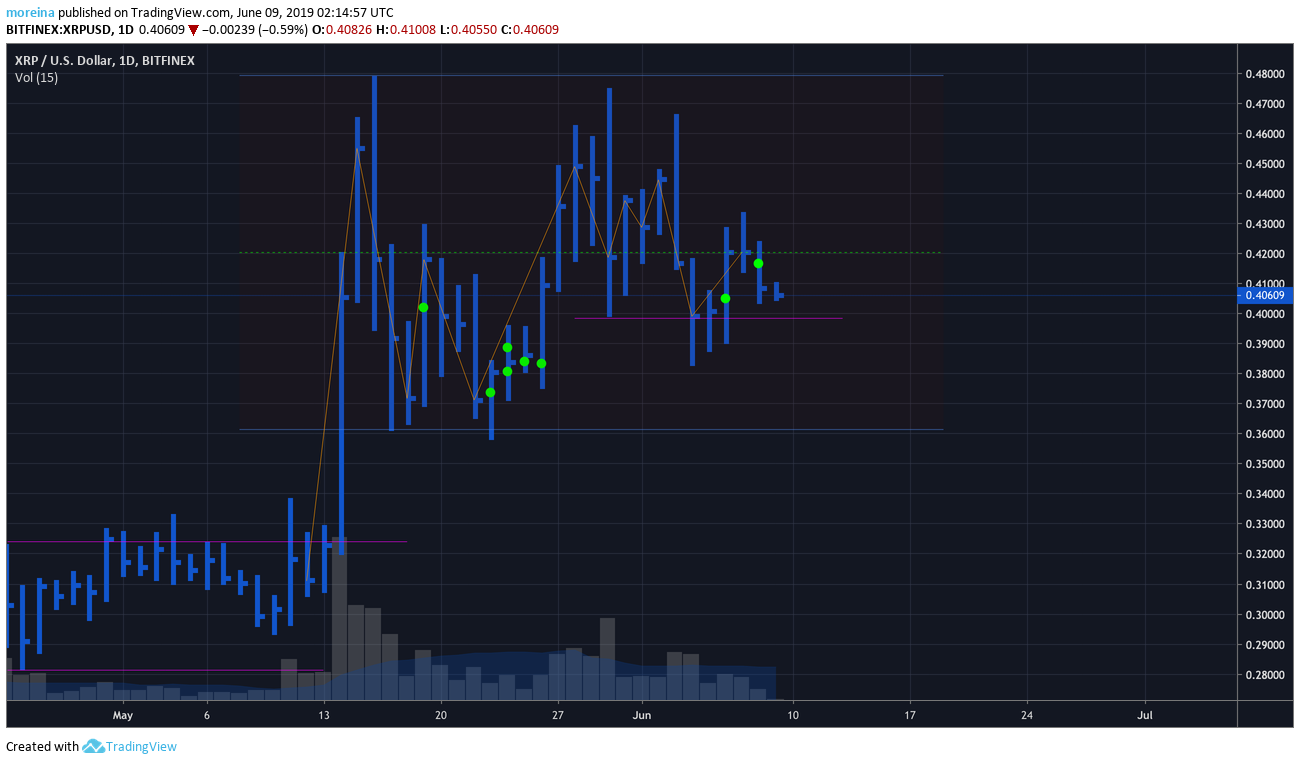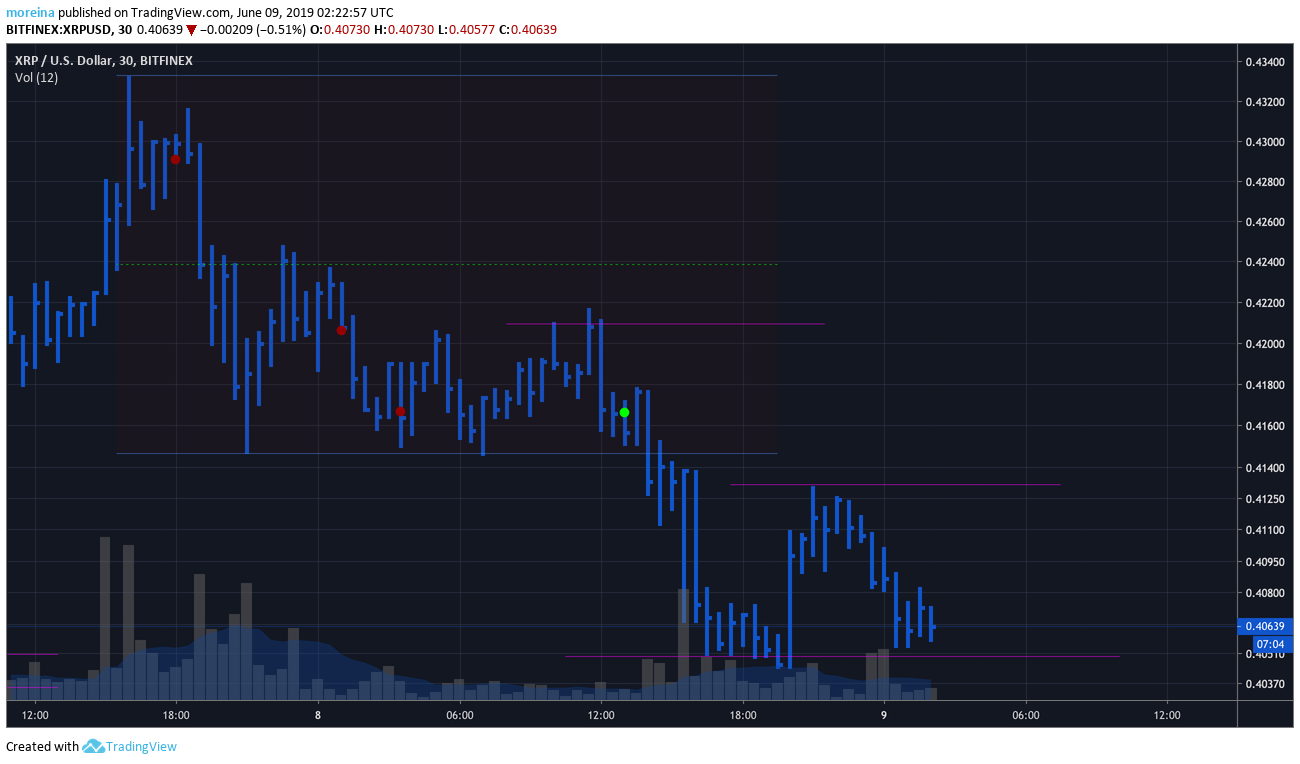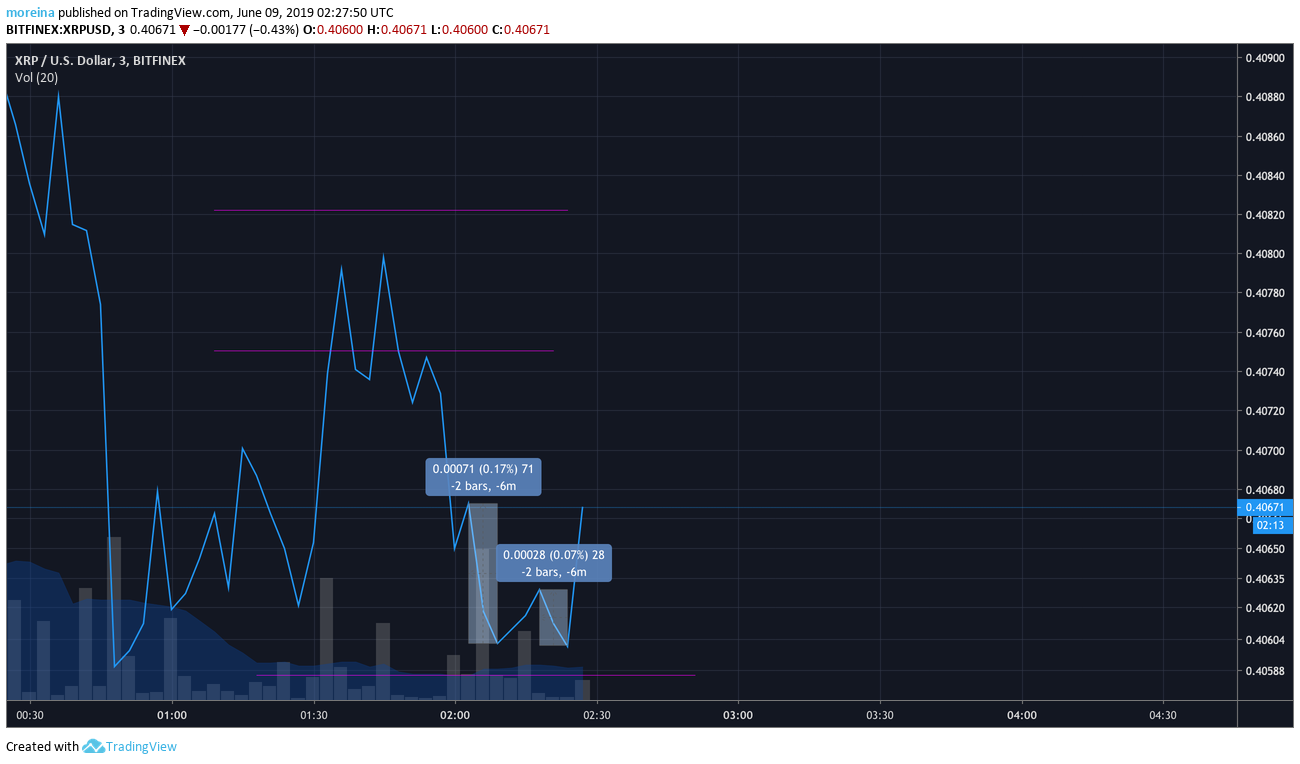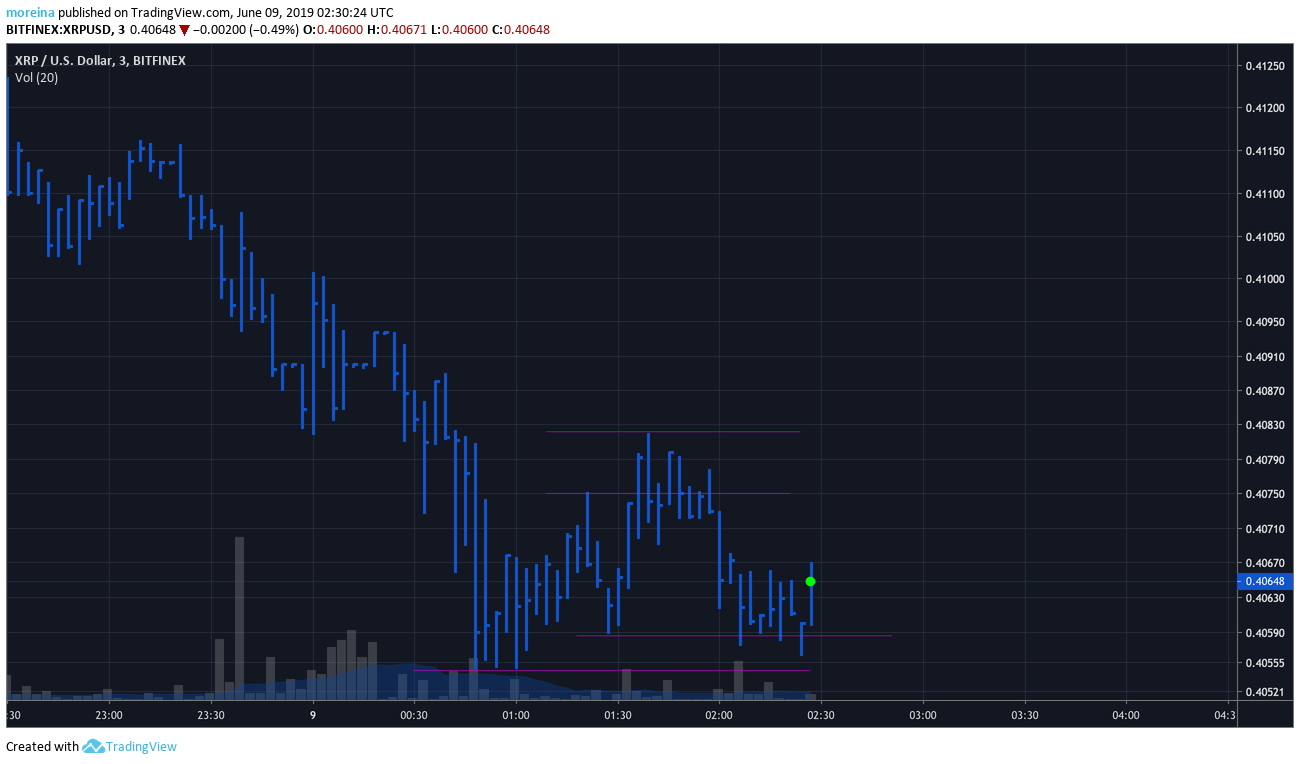• Objectives
Trading part-time, maybe a transition later on if the results are good.
• Markets & Instruments
Focusing on the cryptocurrency called XRP. Tracking the XRP/USD pairing on the bitfinex exchange but doing the actual trade on a local exchange called Coins Pro.
• Style
Position trader, going for the long-term holds. I try to limit my trading to 2 or 3 trades/day.
• Timeframes
Weekly, daily, 30-minute, and 1-3 minutes.
• Reversals, Breakouts or Retracements?
Reversals and retracements due to the low risk involved if the entry is timed right.
• Trade Set Up
If the daily is at a junction point, or possible bounce from a downtrend, determined when today's price rises to yesterday's closing price, I will look at the 30-minute chart. An example:

If the 30-minute chart shows seller exhaustion characterized by a selling climax, or a strong rally after which the price either doesn't reach it's previous low or it does but volume is low, then I use the 3-minute chart for timing the entry. The 30-minute chart of the previous daily chart:

In the 3-minute chart I look for a breakout from the last high determined by closing price, not the high and low of the bar chart. I typically use a line chart for this since it shows the closing prices and the peaks and valleys better in this situation. In the 3-minute chart of the previous chart, I can see that the downward movement is slowing down, from 71 ticks with strong downward volume, to 28 ticks on the next downward movement with almost no volume, signalling exhaustion. After price broke out from the last high I placed an entry:

Same chart but a bar chart, showing the entry I made after the breakout:

So the entry is made based on the price movement of the 3-minute chart, but only after the daily and 30-minute chart signaled a trading opportunity based on my criteria.
Once price starts a new uptrend on the 3-minute chart I monitor the trade on the 30-minute chart. If after entry price reverses and blows past the last swing-low on the 3-minute chart I'll exit and wait for another setup. This happened on the particular trade shown above. Right after entry the market went lower, yet didn't trigger my stop-loss so I just observed. In the end the drop was temporary and the market went higher as predicted.
• Testing
Back-testing and forward testing done though I need to redo testing with more stringent and defined variables, testing each component one by one then together as a whole.
• Entry, Stop Loss & Targets
Targets are defined using P&F vertical count, since it's the one I'm familiar with and has shown to be reliable if the count is not negated. It's also the one that Wyckoff allegedly used so it fits the overall theme.
Trading part-time, maybe a transition later on if the results are good.
• Markets & Instruments
Focusing on the cryptocurrency called XRP. Tracking the XRP/USD pairing on the bitfinex exchange but doing the actual trade on a local exchange called Coins Pro.
• Style
Position trader, going for the long-term holds. I try to limit my trading to 2 or 3 trades/day.
• Timeframes
Weekly, daily, 30-minute, and 1-3 minutes.
• Reversals, Breakouts or Retracements?
Reversals and retracements due to the low risk involved if the entry is timed right.
• Trade Set Up
If the daily is at a junction point, or possible bounce from a downtrend, determined when today's price rises to yesterday's closing price, I will look at the 30-minute chart. An example:
If the 30-minute chart shows seller exhaustion characterized by a selling climax, or a strong rally after which the price either doesn't reach it's previous low or it does but volume is low, then I use the 3-minute chart for timing the entry. The 30-minute chart of the previous daily chart:
In the 3-minute chart I look for a breakout from the last high determined by closing price, not the high and low of the bar chart. I typically use a line chart for this since it shows the closing prices and the peaks and valleys better in this situation. In the 3-minute chart of the previous chart, I can see that the downward movement is slowing down, from 71 ticks with strong downward volume, to 28 ticks on the next downward movement with almost no volume, signalling exhaustion. After price broke out from the last high I placed an entry:
Same chart but a bar chart, showing the entry I made after the breakout:
So the entry is made based on the price movement of the 3-minute chart, but only after the daily and 30-minute chart signaled a trading opportunity based on my criteria.
Once price starts a new uptrend on the 3-minute chart I monitor the trade on the 30-minute chart. If after entry price reverses and blows past the last swing-low on the 3-minute chart I'll exit and wait for another setup. This happened on the particular trade shown above. Right after entry the market went lower, yet didn't trigger my stop-loss so I just observed. In the end the drop was temporary and the market went higher as predicted.
• Testing
Back-testing and forward testing done though I need to redo testing with more stringent and defined variables, testing each component one by one then together as a whole.
• Entry, Stop Loss & Targets
Targets are defined using P&F vertical count, since it's the one I'm familiar with and has shown to be reliable if the count is not negated. It's also the one that Wyckoff allegedly used so it fits the overall theme.
